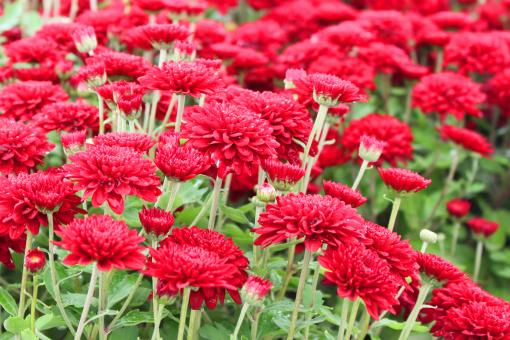Gardening is more than just a hobby for millions of Americans. It is a passion. Climate change threatens gardening across the nation. You can be part of the answer, even while gardening.
Why Gardeners Care
Many gardeners and backyard wildlife lovers across the country are aware that climate change has already had a significant effect on our backyard habitats.
- Plants blooming earlier due to higher temperatures and changing precipitation patterns creates unpredictable seasons. Temperature increases can harm even warm-weather crops like tomatoes.
- The ranges of non-native invasive plants and animals are expanding, making it easier for them to exploit weakened ecosystems in order to outcompete native species. Some of the worst invasive species, such as kudzu and garlic mustard, could thrive in new conditions, and spread to new areas.
- Many native plants and iconic species may also be affected by climatic shifts, making it impossible for them to survive within portions of their historical range. Many states may lose their official state trees and flowers. Imagine Virginia without flowering dogwoods or Ohio without Ohio Buckeyes!
- This will disrupt important connections between Pollinators and breeding birds, insects and other wildlife, as well as the plants on which they depend. Hummingbirds, bees, and other pollinators may arrive too early or late to feed on flowers that they are used to.
These warning signs are a clear indication that we must take immediate action to reduce our carbon emissions. A changing climate poses a number of challenges to gardeners, given the close relationship between gardens and variables like temperature and rainfall. Many studies have shown that any benefits of a longer season are outweighed by the problems. These include watering restrictions, damaging storms and an increase in unruly weeds.
Climate Solutions in the Gardeners’ Hands
Climate change is not inevitable, despite the dire predictions. Serious Consequences will also be projected. However, the impact of carbon pollution on our environment can be reduced significantly if we reduce it now. We can take steps to adapt both the natural and human community to the already occurring changes.
Gardeners can be both stewards of the environment and guardians, and make a significant difference in the fight to combat climate change. Here are some ways we can help both our backyards, communities and the entire country.
Take Action in Your Community and Backyard
- Increase your energy efficiency. By using energy-efficient products, you can reduce the amount of carbon dioxide that is released into the atmosphere. You can install automatic outdoor lighting timers or solar-powered garden tools in your backyard.
- Reduce your use of gasoline powered yard tools. Do not use gasoline powered tools like lawn mowers or leaf blowers. Use human-powered tools like hand clippers, rakes, or push mowers instead. A gasoline-powered lawn mower pollutes up to 12 times as much as the average automobile in an hour.
- By removing invasive plants and replacing them with native alternatives, you can reduce the risk of an invasive species expanding. Native plants are important for pollinators and wildlife. Nonnative plants may compete with these native species to gain habitat and food. Find out which plants are native in your area by contacting your local native plant society.
- Reducing water consumption is important, especially during heat waves or droughts. Mulching, installing rain barrels and adjusting watering schedules are all ways to reduce water consumption. Mulching also provides nutrients to the soil and reduces the need for chemical fertilisers, which require a lot of energy to manufacture.
- Compost your kitchen and garden waste. By composting these wastes, you can reduce carbon pollution. Methane is a powerful greenhouse gas. Composting kitchen and garden waste is a great way to reduce your carbon footprint, especially methane. Methane is a powerful greenhouse gas.
- Plant many trees to absorb CO2. A tree can store and absorb as much carbon pollution as a ton. The 85 million American gardening households could absorb 2 million tons of carbon dioxide each year if they planted one young shade-tree in their backyards or communities. Planting shade trees near your home will also help you save energy during the summer.
- Create a Community Wildlife Habitat by certifying the backyard of your home and encouraging neighbors to do so. This will help wildlife cope better with climate change and maintain fragmented habitats.
Take Action for Your Elected Officials
Gardeners can also play a role in moving America towards a cleaner, more sustainable, and safer future. They can do this by contacting their elected officials on the local, federal, and state levels, and encouraging them to develop a plan of action that will combat climate change, protect people, and wildlife, from its impacts.
Tell your congressmen that you support the policies and regulations to curb climate change pollution, and that they will help wildlife and communities flourish.
More Resources
- Learn how to reduce the greenhouse gas emissions.
- Read about our recommendations on how to use natural systems to fight climate change.
- Browse the native plants finder.
- Browse for native plants that we have hand-picked.



